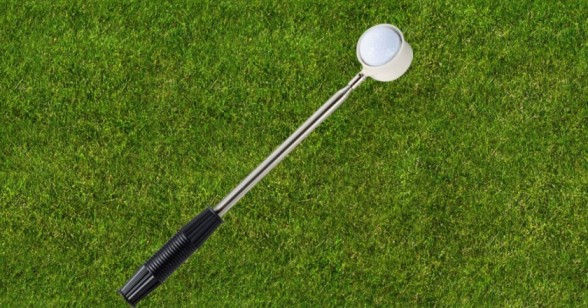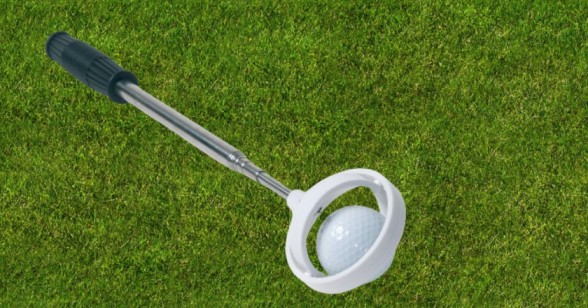Keeping Your Golf Ball Retriever in Top Condition
Cleaning Your Golf Ball Retriever
Importance of Regular Cleaning
Maintaining your Callaway golf ball retriever in top condition starts with regular cleaning. Over time, dirt, mud, and debris can accumulate, affecting both the performance and lifespan of your retriever. A clean golf ball retriever ensures smooth operation on the course.
Step-by-Step Cleaning Process
Removing Dirt and Debris:
Begin by gently removing any visible dirt or debris from the retriever. Use a soft brush or cloth to wipe away dirt, paying close attention to the telescopic poles and retractable parts.

Cleaning Telescopic Poles and Retractable Parts:
Telescopic poles and retractable parts are prone to dirt buildup. Clean these sections thoroughly, extending and retracting the poles to access hidden areas. Be meticulous in your cleaning process to prevent any residue that may affect the retriever’s functionality.
Drying and Storing the Retriever Properly:
After cleaning, ensure the retriever is completely dry before storing it. Moisture can lead to rust and corrosion, compromising the integrity of the golf water retriever. Store the retriever in a cool, dry place, avoiding direct sunlight and extreme temperatures.
Inspecting for Wear and Tear
Regular Visual Inspections
Performing regular visual inspections is crucial for detecting early signs of wear and tear. Check the entire retriever, paying attention to joints, hinges, and moving parts. Early identification of issues can prevent further damage and extend the lifespan of your Callaway golf ball retriever.
Checking for Bent or Damaged Parts
Inspect the telescopic poles for any signs of bending or warping. Bent poles can affect the retriever’s reach and may lead to more severe damage if not addressed promptly. Additionally, check the grip handles for cracks or wear, ensuring a comfortable and secure grip during use.
Ensuring Proper Functionality
Inspecting the Grip Mechanism:
Examine the grip mechanism for any signs of malfunction. Ensure that the gripping strength is consistent and that the mechanism engages and releases smoothly. A well-functioning grip mechanism is essential for efficient ball retrieval.

Verifying the Integrity of the Scoop or Grabber:
Check the scoop or grabber mechanism for wear and tear. Ensure that it opens and closes properly and that there are no damaged or missing components. A fully functional scoop ensures effective retrieval of golf balls from various terrains.
Lubrication and Maintenance of Moving Parts
Identifying Parts that Require Lubrication
Moving parts, such as telescopic poles and hinges, may require periodic lubrication to ensure smooth operation. Identify the specific parts that need lubrication to prevent friction-related issues that could impact the performance of your golf ball retriever.
Selecting Appropriate Lubricants
Choosing the right lubricants is crucial to preventing damage to your retriever. Opt for silicone-based or graphite-based lubricants that are suitable for golf ball retrievers. Applying Lubrication to Telescopic Poles, Hinges, and Other Moving Parts
Apply lubrication to telescopic poles by extending and retracting them, ensuring even distribution. Pay special attention to hinges and joints, applying a small amount of lubricant to prevent rust and corrosion. Wipe away any excess lubricant to maintain cleanliness.
Preventing Rust and Corrosion
Rust and corrosion are common issues in golf ball retrievers, especially those designed for water retrieval. Regularly applying a rust inhibitor or protective coating to vulnerable areas can significantly extend the lifespan of your retriever, especially if it’s frequently used as a golf ball retriever from water.
Replacing Worn-Out Parts
Recognizing Signs of Irreparable Damage
Despite diligent maintenance, certain parts may eventually wear out or sustain irreparable damage. Recognizing the signs of such damage is crucial for prompt replacement, preventing further issues that could compromise the retriever’s performance.
Identifying Common Parts that May Need Replacement
Grip Handles:
If grip handles show signs of cracks or wear, consider replacing them to ensure a secure and comfortable hold during use.
Scoop or Grabber Mechanisms:
Worn-out scoop or grabber mechanisms can hinder effective ball retrieval. Telescopic Pole Segments:
Bent or damaged telescopic pole segments can impact the retriever’s reach. Promptly replace any segments showing signs of wear to maintain optimal performance.
Sourcing and Installing Replacement Parts
When replacing parts, it’s crucial to use authentic and compatible replacement components. Contact the manufacturer or authorized dealers to source genuine golf ball retriever parts. Follow manufacturer’s guidelines and instructions for proper installation to ensure the retriever retains its original functionality.
Proper Storage Practices
Storing the Retriever in a Clean and Dry Environment
Proper storage is essential for maintaining your Callaway golf ball retriever. Store the retriever in a clean and dry environment to prevent the accumulation of dirt and moisture that can lead to corrosion.
Avoiding Exposure to Extreme Temperatures
Extreme temperatures, whether hot or cold, can affect the materials of your golf ball retriever. Avoid leaving the retriever in direct sunlight or extreme heat, as this can cause damage to the telescopic poles and other components.
Utilizing Protective Covers or Cases
Consider using protective covers or cases designed for golf ball retrievers. These accessories provide an extra layer of protection during storage and transportation, preventing scratches, dents, and exposure to external elements.
Preventing Damage During Transportation
When transporting your golf ball retriever, take precautions to prevent damage. Use a designated compartment in your golf bag or invest in a retriever case to shield it from potential impacts and ensure it arrives at the course in top condition.
Avoiding Common Mistakes in Maintenance
Overlooking Regular Inspections
One common mistake in golf ball retriever maintenance is overlooking regular inspections. Consistent visual checks can identify potential issues early on, preventing more extensive damage and costly repairs.

Using Incorrect Cleaning Agents
Using harsh or abrasive cleaning agents can damage the surface finish and materials of your golf ball retriever. Stick to mild soaps or specialized golf club cleaning solutions to ensure effective cleaning without compromising the retriever’s integrity.
Neglecting to Lubricate Moving Parts
Neglecting to lubricate moving parts is a common oversight. Regularly applying lubricant to telescopic poles, hinges, and other moving components prevents friction-related issues and ensures smooth operation during use.
Storing the Retriever Improperly
Improper storage is a prevalent mistake that can lead to damage. Avoid leaving the retriever exposed to the elements or stored in damp conditions, as this can accelerate wear and reduce its overall lifespan.
Seasonal Maintenance Tips
Special Considerations for Off-Season Storage
During the off-season, when your golf ball retriever is not in use, take special precautions for storage. Clean the retriever thoroughly, apply a rust inhibitor, and store it in a cool, dry place to prevent any deterioration during periods of inactivity.
Preparing the Retriever for Seasonal Changes
Before the golf season begins, conduct a thorough check of your retriever. Inspect all components, replace any worn-out parts, and ensure it’s in optimal condition for the challenges of the upcoming season.
Utilizing Manufacturer Guidelines
Following Specific Maintenance Instructions Provided by the Manufacturer
Manufacturers often provide specific guidelines for the maintenance of their golf ball retrievers. Consult the user manual or contact the manufacturer for detailed instructions on cleaning, lubrication, and other essential maintenance practices.
Contacting Customer Support for Clarification
If you have any questions or uncertainties regarding maintenance practices, don’t hesitate to contact customer support. Clear communication with the manufacturer can provide valuable insights and ensure that you’re following recommended procedures.
Understanding Warranty Conditions Related to Maintenance Practices
Be aware of the warranty conditions related to maintenance practices. Some warranties may require adherence to specific maintenance guidelines to remain valid. Understanding these conditions ensures you receive proper support in case of defects or issues covered by the warranty.
Incorporating Preventive Measures
Implementing a Regular Maintenance Schedule
Establishing a regular maintenance schedule is crucial for proactive care. Whether it’s a weekly, bi-weekly, or monthly routine, consistent upkeep prevents issues from escalating and extends the life of your Callaway golf ball retriever.
Taking Precautions During Use to Minimize Wear
While using the retriever on the course, take precautions to minimize wear. Avoid excessive force when extending or retracting telescopic poles, and handle the retriever with care to prevent unnecessary stress on joints and moving parts.
Encouraging Responsible Handling by Users
If your golf ball retriever is used by multiple players, encourage responsible handling. Educate users on proper cleaning, storage, and usage practices to ensure collective efforts to maintain the retriever in top condition.
Keeping your golf ball retriever, especially a quality Callaway golf ball retriever, in top condition requires a combination of regular cleaning, thorough inspections, proper lubrication, and timely replacement of worn-out parts.
By following these comprehensive maintenance practices, you can maximize the lifespan and effectiveness of your golf ball retriever, ensuring it remains a reliable companion on the greens for years to come.
